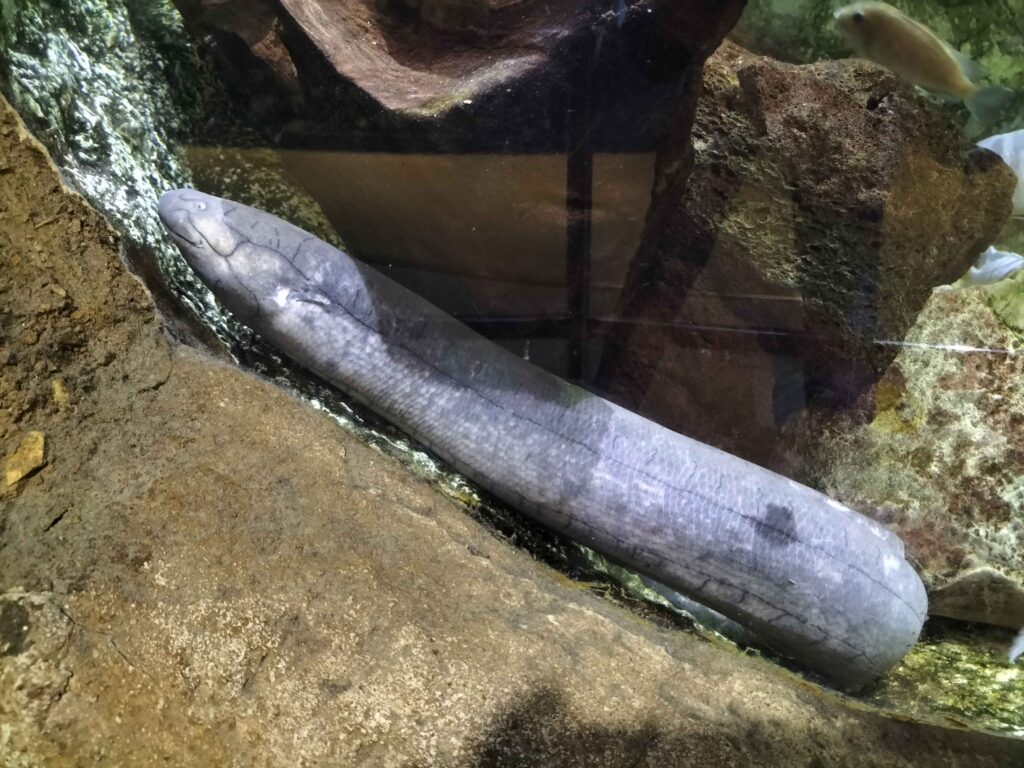
South American lungfish
Lepidosiren paradoxa
MAXIMUM LENGTH

125 cm
FEEDING

Omnivore
ACTIVITY

Diurnal
These fish live in stagnant waters with little current. They can live in environments with low oxygen levels thanks to their very small gill apparatus. They have two lungs. During the dry period they bury themselves in the mud at a depth of about 30-50 cm and seal the entrance with clay, leaving 2 or 3 holes for airing. In this hibernation period their metabolism slows down. During the rainy season, reproduction begins. The parents make a burrow and the males take care of the young. The young have four gills and resemble tadpoles. After seven weeks they breathe from the air and their gills regress. They feed on vertebrates, invertebrates – such as snails, clams and shrimps – and algae.
Interesting facts
Males can increase the level of oxygen in the burrows because during the breeding season they develop extremely vascularised structures on their pectoral fins, which release additional oxygen into the burrow.
Distribution
Conservation status
